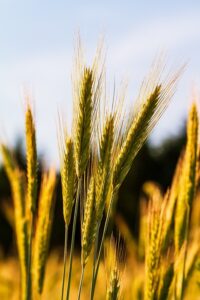Introduction
In early America, the cultivation of rye played a critical role in transforming the economic and social landscape of the newly settled colonies. From its humble beginnings as a staple crop for survival during times of famine, rye quickly became a key ingredient in the diets of early settlers and a valuable commodity for trade. This article will explore the impact of rye cultivation in early America, tracing its evolution from a subsistence crop to a thriving industry.
The Role of Rye in Early America
Survival during Hard Times
The cultivation of rye in early America can be traced back to the early colonial period when European settlers first arrived on the shores of the New World. Facing harsh conditions and limited resources, these settlers turned to rye as a reliable crop that could provide sustenance during times of famine. Rye was well-suited to the harsh climates of the northern colonies, where other grains struggled to thrive. Its ability to withstand cold temperatures and poor soil conditions made it a valuable asset for early settlers trying to establish themselves in unfamiliar territory.
A Staple Crop for Early Settlers
As settlements grew and expanded, the cultivation of rye became more widespread. Rye quickly became a staple crop in the diets of early settlers, providing a reliable source of food that could be stored for long periods of time. Rye was used to make bread, porridge, and other food staples that sustained early colonists through harsh winters and lean times. Its versatility and resilience made it a vital component of the early American diet.
The Rise of Rye as a Commodity
Rye as a Trade Crop
As settlements grew and trade routes expanded, rye became an important commodity for export. Rye flour, in particular, became a valuable product that could be traded for goods and services in other colonies and even back in Europe. The cultivation of rye helped to stimulate economic growth and development in early America, providing a valuable source of income for farmers and traders alike.
Rye Distillation and Spirits Production
In addition to its role as a food crop, rye was also used in the production of alcoholic beverages, particularly whiskey. Rye whiskey quickly became a popular drink among early American colonists, with distilleries popping up across the colonies to meet demand. The production of rye whiskey helped to further boost the economy and create new opportunities for entrepreneurs in early America.
The Impact of Rye Cultivation on Early American Society
Migration and Settlement
The cultivation of rye played a key role in shaping patterns of migration and settlement in early America. The ability of rye to thrive in harsh conditions made it a valuable crop for settlers looking to establish themselves in new territories. As more land was cleared for rye cultivation, new settlements emerged, pushing the boundaries of European colonization further into the wilderness.
Community Building and Social Cohesion
The cultivation of rye also played a role in building community and social cohesion among early settlers. Rye farming was often a communal effort, with neighbors coming together to plant, harvest, and process the crop. This shared labor helped to forge bonds among settlers and create a sense of solidarity in the face of the challenges of frontier life.
Conclusion
In conclusion, the cultivation of rye in early America had a profound impact on the economic and social development of the colonies. From its origins as a survival crop for famine to its transformation into a thriving industry, rye played a vital role in sustaining early settlers and driving economic growth. The cultivation of rye helped to shape patterns of migration and settlement, build community and social cohesion, and stimulate trade and commerce. As such, rye stands as a testament to the resilience and ingenuity of early American colonists in the face of adversity.





